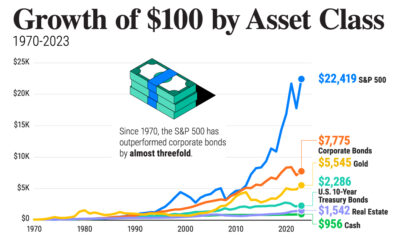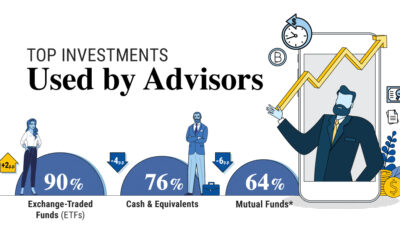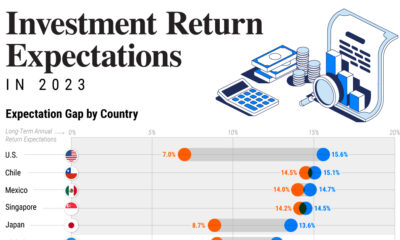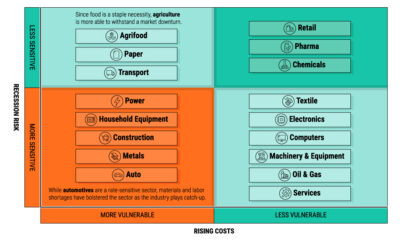This infographic is available as a poster.
Visualizing the Real Estate Investment Universe
From residential property to data centers, real estate investment covers many different sectors.
While office, retail, and residential properties may come to mind first, the investment landscape extends to property types like health care and infrastructure—two sectors that were booming in 2021 as demand for laboratory space increased and facilities underpinning the digital economy expanded.
In this Markets in a Minute from New York Life Investments, we show the scope of U.S. publicly listed real estate investment trusts (REITs) by sector.
How Do REITs Work?
Most often, REITs are publicly-listed investments on a stock exchange. These investment vehicles manage income-producing properties and provide investors exposure to the real estate industry both through the price appreciation of property assets and the income earned through mortgages or leases.
By law, roughly 90% of this taxable income must be distributed to stockholders in dividends.
For instance, an office REIT may own a number of skyscrapers and office buildings that collect leases from tenants. This income from tenants—such as Salesforce or Amazon—would then be distributed to shareholders of the office REIT.
Today, U.S. publicly-listed REITs own 503,000 properties across the country valued at $2.0 trillion.
What are the Different Types of Real Estate Investment?
U.S. listed REITs fall into roughly 17 categories, according to data from Nareit.
Below, we will show each sector based on their earnings in the first quarter of 2022 as measured by funds from operations (FFO). FFO looks at cash flow earned from operations and is considered a broad performance indicator for the industry.
| Sector | Earnings* |
| Retail | $3.5B |
| Infrastructure | $2.7B |
| Residential | $2.4B |
| Industrial | $1.8B |
| Health Care | $1.8B |
| Apartments | $1.7B |
| Office | $1.6B |
| Self Storage | $1.3B |
| Shopping Centers | $1.2B |
| Free Standing | $1.2B |
| Regional Malls | $1.1B |
| Data Centers | $0.9B |
| Specialty** | $0.8B |
| Diversified | $0.6B |
| Lodging/Resorts | $0.5B |
| Single Family Homes | $0.4B |
| Manufactured Homes | $0.3B |
| All Equity REITs | $18.0B |
*Measured by Funds From Operations (FFO).
**Specialty includes gaming, outdoor advertising, farmland, and other non-traditional REIT property types. Data as of Q1 2022.
Despite thousands of storefronts being shut down during COVID-19, retail earnings remained the largest across all sectors, at $3.5 billion. In fact, earnings bounced back to pre-pandemic levels during the first quarter of 2022.
As the second largest sector, infrastructure saw $2.7 billion in earnings, rising over 47% compared to the first quarter of 2021. Infrastructure includes wireless infrastructure, fiber cables, and energy pipelines.
Residential, at $2.4 billion, is the third largest sector. Like retail, earnings have exceeded pre-pandemic levels, rising over 19% since the end of 2019.
Overall, real estate investment earnings hit a record $18 billion, driven by sectors hit hardest by the pandemic.
Key Characteristics of Real Estate Investments
Thanks to long-term leases—often between 5 and 10 years—REITs provide stable dividend earnings to investors. In 2021, the average dividend yield of U.S. REITs was 2.6%, more than double the yield of the S&P 500 at 1.2%.
In addition, they are often well-positioned during inflationary environments. As the below table shows, during periods of high inflation REITs average annualized returns were 16%. Even better, REIT earnings increased as inflation levels continued to rise.
| Inflation Environment | U.S. REIT Price Return | U.S. REIT Income Return | Total Annualized Return |
| High Inflation (>6.3%) | 5.3% | 10.7% | 16.0% |
| Moderate Inflation (2.0%-6.3%) | 6.2% | 6.9% | 13.1% |
| Low Inflation(<2.0%) | 4.9% | 5.1% | 10.0% |
Source: Morningstar (Jun 2021). REIT returns represented by the FTSE Nareit Equity REITs Index from Jan 30, 1976 to Jun 30, 2021.
While REITs are often positively correlated with inflation, they often have a low correlation with equities. For this reason, they can serve as a key diversifier when markets take a turn for the worse, potentially reducing the risk profile of your portfolio.
Due to the combination of these factors, real estate investments have proven resilient, with many REITS paying higher dividends than other forms of investments.


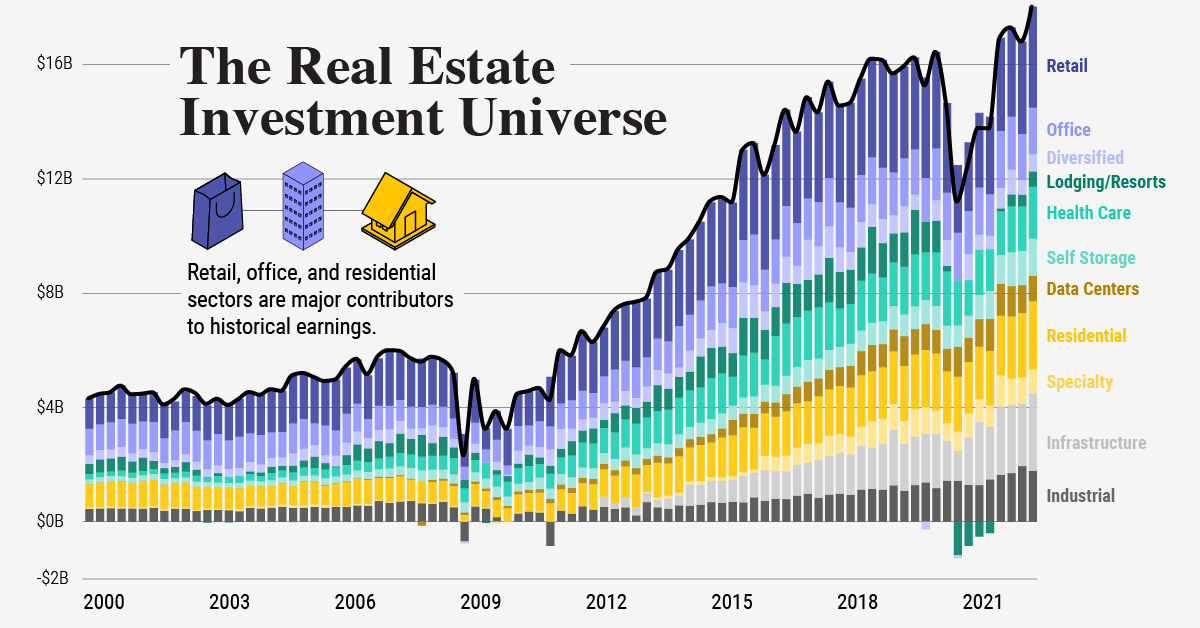

 Infographics2 years ago
Infographics2 years ago
 Markets in a Minute2 years ago
Markets in a Minute2 years ago
 Markets in a Minute2 years ago
Markets in a Minute2 years ago
 Infographics2 years ago
Infographics2 years ago
 Markets in a Minute1 year ago
Markets in a Minute1 year ago
 Infographics3 years ago
Infographics3 years ago
 Markets in a Minute2 years ago
Markets in a Minute2 years ago
 Infographics1 year ago
Infographics1 year ago

